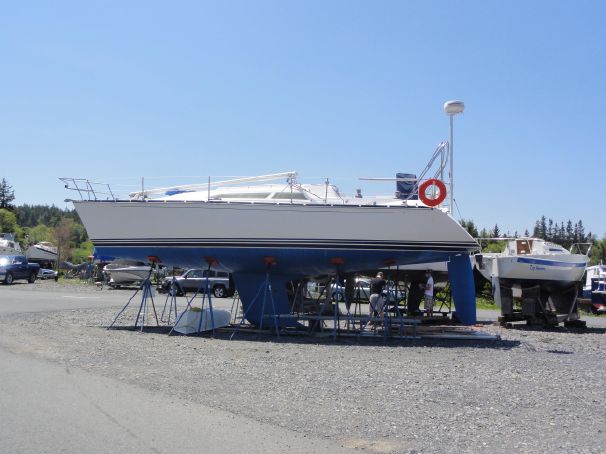Advertisement
Advertisement
Perry Design Review: C&C Express 110
Sleek, handsome cruiser with performance characteristics
September 14, 2000
Tartan Yachts of Ohio recently bought the C&C name, along with the tooling for the C&C 51 and a lot of the parts of the older C&C models. This is very good news for owners of older C&Cs. The other good news is that this acquisition by Tartan also ensures the continuation of the C&C name.
Over the years C&C has brought us some of the best in production yachts, including the C&C 39, which always makes it onto my top-10 list of favorite boats. The newest C&C design team is headed by Tim Jackett, who designs all the Tartans. We call this approach an in-house design effort.
The design distinction between the Tartan and C&C lines is certainly marked and it is very evident in this first new C&C, the C&C Express 110, which is 36 feet 4 inches overall. Aesthetically, this model is classic C&C with its crisp, faceted angles punctuating a sleek deck profile. While not a racer, it would do fine in any PHRF fleet, and it has enough of the look of a performer to give the impression that its origins are based in racing.
The hull shape shows deadrise of 13 degrees amidships fairing to not-quite-flat at the transom. This deadrise, or V section, is in contrast to the flat center sections and arclike sections we see on a lot of modern boats. I happen to like the V sections. They give a nice natural bilge area and they are strong. There is no hollow in the entry waterlines and the half-angle of entry is 20.5 degrees. The turn to the bilge is moderately firm for good initial stability. The transom is very unusual in that it appears to be a flat surface with the outboard edges chamfered off. I don't see the point unless it's a styling device, and if that is the case, it looks good. The stern is broad on deck. The D/L is 157.
Note the extra-long trailing-edge fillet on the keel. This serves two purposes. It provides a long root for the keel attachment to the hull so the loads can be well spread out. It also provides a long root for a stubbier, shoal-draft keel. The deep fin draws 7 feet 3 inches while the standard keel draws 6 feet and the shoal keel draws 4 feet 10 inches. Choosing a keel depth is extremely important. Always go with the deepest draft that you can possibly live with. There is no substitute for draft.
This boat has a clever interior that makes extensive use of a molded liner to make its curves and angles work. I'm not in love with angles, and I generally prefer a more orthogonal approach to layouts. These days, however, I seem to be in the minority. This boat can boast a shower stall — unusual on a 36-footer. I'd like to know the length of the settee berths; they look short to me. The V-berth double certainly appears pinched for room, but the aft double makes up for it.
I wish the newest C&C group the best of luck and applaud them on this handsome design.
Sleek, handsome cruiser with performance characteristics.
| LOA | 36' 4" |
| LWL | 31' 6" |
| Beam | 12' |
| Draft | 7' 3" (deep fin), 6' (standard fin), 4' 10" (shoal-draft bulb) |
| Displacement | 10,900 lbs. |
| Ballast | 4,200 lbs. |
| Sail Area | 705.75 sq. ft. |
| SA/D | 22.97 |
| D/L | 157 |
| L/B | 3.03 |
| Auxiliary | Volvo 28-horsepower diesel with saildrive |
| Fuel | 35 gal. |
| Water | 50 gal. |
 This story originally appeared in Sailing Magazine, and is republished here by permission. Subscribe to Sailing.
This story originally appeared in Sailing Magazine, and is republished here by permission. Subscribe to Sailing.Advertisement
Related Boats for Sale
See more boats like thisAdvertisement


















